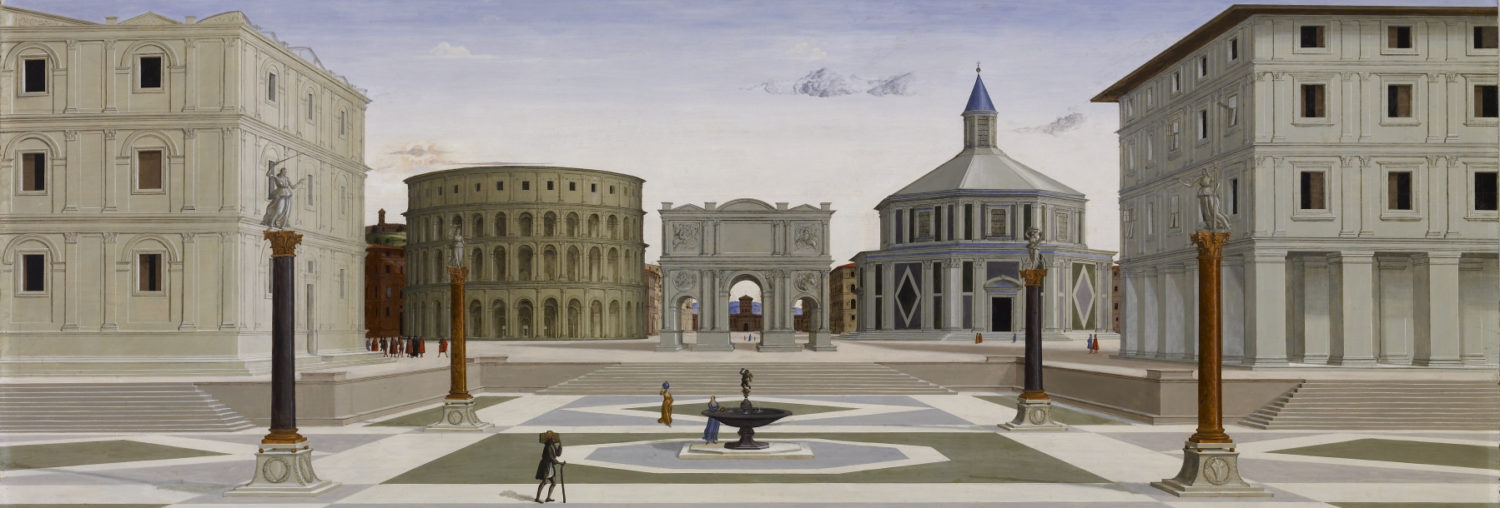VALLADOLID (José García, 2011)
This work of art was painted by José García. It is a watercolor that represents Platerias Street in Valladolid. With this image, the painter started a collection of paintings inspired by a street race entitled “Ríos de luz”. During this race some emblematic buildings of Valladolid were illuminated at night, and that encouraged the painter to exploit the characteristic colors produced overnight. It also shows one of the most important churches in the city center.
In the foreground we can see Platerias Street that presents a prototype of Renaissance perspective of the late sixteenth century and a development model for that time. For many years it was the main street of Valladolid. Silversmiths established here for a long period of time and they had the privilege of closing the street at night with chains. This street suffered frequent floods from the north branch of the river Esgueva, which is very near. In addition, there were a number of fires that made necessary some reforms during the 17th and the 20th centuries.
In the 17th century it took place the major renovation project after a fire that significantly affected the commercial center. To do this, the royal architect of Phillip II conducted a reconstruction of the houses following a Roman style with regular seats by arcades, balconies, facades and unit alignment of streets. These new buildings should respect the classic proportions, based on the brick or the Castilian foot, modulates floors and elevation of buildings, squares and streets. The materials used follow the trend set by the Habsburgs: brick facades clad in red and gray for the columns, footings and lintels from Cardeñosa (Ávila), along with wrought iron on the balconies and joinery painted in Green. Nowadays you can distinguish two parts in all the buildings, the first floor for housing and the ground floor for commercial spaces known as the antique silverware.
The urban organization of this street is divided into three parts: commercial spaces, cultural buildings and houses. If we see the street from an aerial perspective we could see an irregular flat in the center of the town where the Street of this painting is situated. On the other hand, we can appreciate the profound renovation that has suffered the buildings and how it has developed from a street only for the silversmiths guild to includes new business. As a remarkable fact, the colors that the painter used are bright colors that lead us to think that it is a modern street even though the layout that it have. Also, we can suppose that it is a busy street in the area because of its location and therefore through these very light colors it invites you to visit Platerias Street. It is a good example of building renovation as it kept the essence of the buildings in the past and because of that I choose this painting.
The church standing out on the background is one of the most important churches in Valladolid: the Penitencia de la Vera Cruz church. It was built in 1581 by Pedro de Mazuecos, an architect who draws it with a nave and a dome respecting the arc that was down the street since the fire of 1561. This church had a meeting room and warehouse for procesional activities. The building was modified by Diego de Praves in 1595 forming two bodies that simulate triumphal arches, separated by the balcony for the authorities typical physiognomy of the penitential churches of the time. In 1667 it was extended with vaulted naves and flat head.
Lucía Torra Pérez

